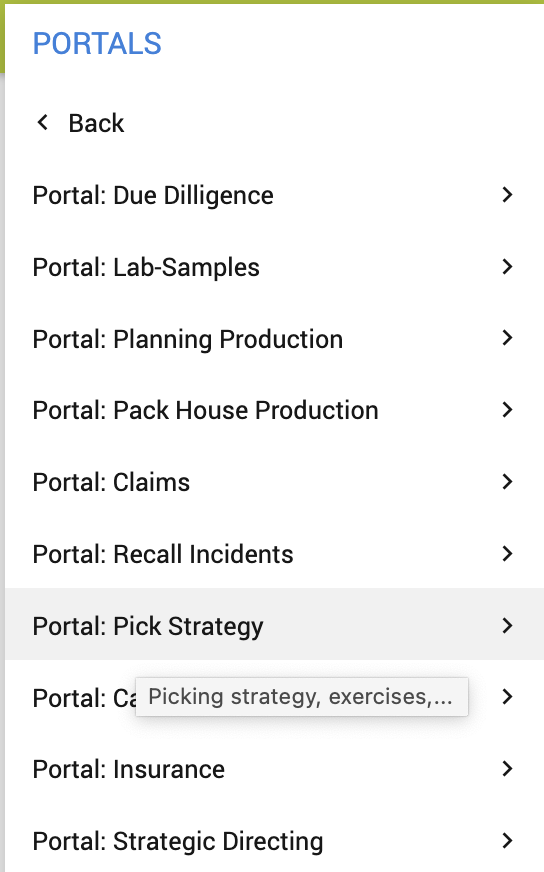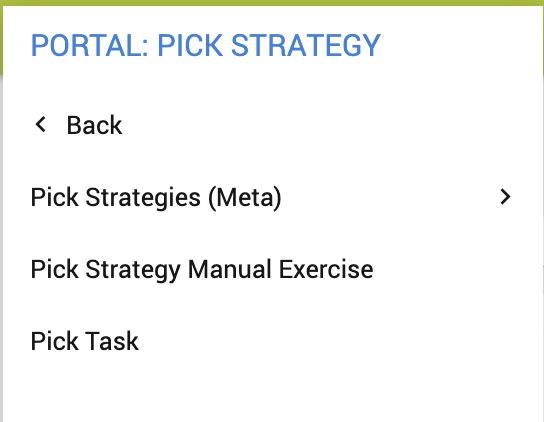Pick Strategy in Fresh Produce
In Flex2B, the pick strategy elements can be found through the 'Portal: Pick Strategy' menu.


Designing an effective pick strategy is crucial for optimizing a supply chain, as it directly impacts order fulfillment, operational efficiency, and customer satisfaction.
Flex2B Cloud has a portal section that is helping you to define certain 'Pick Suggestions' and 'Pick Strategies'.
There are some key considerations and strategies for an efficient fresh produce supply chain picking process:
A,B,C Analysis:
- Classify products based on their importance and demand. Use the ABC analysis (A-items are high-value and high-demand, B-items are moderate, and C-items are low-value and low-demand).
- For Fresh Produce, similar characteristics may put other properties to the A, B, C-items, such as Produce Risk, PPS (the sliding time window in Flex2B and many more...). For each business the A,B, C categories can be defined to their own needs.
- Allocate more resources and efficient picking methods for high-priority items.
Batch Picking:
- Group orders together and pick items for multiple orders simultaneously to reduce travel time.
- Batch picking is particularly effective for orders with common SKUs.
Zone Picking:
- Divide the warehouse into zones, ie Cooling Rools and assign specific pickers to each zone.
- Each picker is responsible for picking items only within their designated zone, reducing travel time.
Wave Picking:
- Combine multiple orders into waves based on common characteristics (ie delivery location, product type).
- Pickers work through waves, improving efficiency by reducing the need to revisit the same location multiple times.
Cross-Docking:
- Directly transfer goods from inbound to outbound without the need for storage.
- Reduces the time products spend in the warehouse and minimizes handling. (ie Replenishment)
Automation and Robotics:
- Implement automated picking systems and robotics for repetitive and high-volume tasks.
- Reduces labor costs and increases speed and accuracy.
Dynamic Slotting:
- Regularly review and adjust item placement based on demand patterns.
- Keep frequently picked items in easily accessible locations.
Pick Accuracy Measures:
- Implement quality control measures to ensure accurate picking.
- Use barcode scanners and RFID technology to reduce picking errors.
Flexible Workforce:
- Cross-train employees to perform multiple tasks within the warehouse.
- This allows for flexibility during peak seasons or unexpected changes in demand.
Continuous Improvement:
- Regularly analyze data and key performance indicators (KPIs) to identify areas for improvement.
- Seek feedback from warehouse staff for insights into potential enhancements.
Seasonal Adjustments:
- Anticipate and plan for changes in demand during peak seasons.
- Adjust staffing levels, storage configurations, and picking strategies accordingly.
Remember, the most effective pick strategy often involves a combination of these approaches, tailored to the specific characteristics and demands of your supply chain. Regularly review and refine your strategy to adapt to changing business conditions and technological advancements.